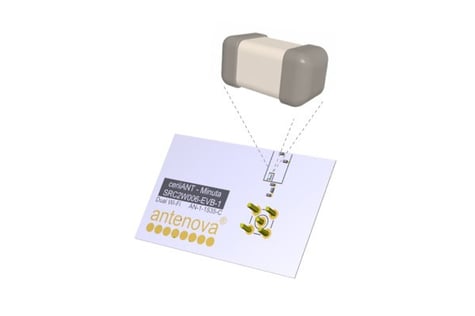The Antenova Weii antenna used in the Lattis™ Ellipse™ Bluetooth-enabled bike lock was one of the most critical parts of the hardware development. This extremely small ceramic antenna measures just 1.0mmx0.5mmx0.5mm and its small dimensions and its ability to stay on-frequency, at 2.45GHz, in the device environment was key to it’s selection for this application.
The reason the antenna was so important to the product design is that, apart from the capacitive touchpad interface, the antenna and wireless connectivity via the BTLE radio is the only way for EllipseTM to communicate with the user’s SMART phone APP for monitoring it.
As such, one of the main product requirements was as strong as possible a Bluetooth signal that will allow users to reliably monitor the security of their bike from a distance and to allow the Ellipse bike lock to maintain connectivity with the users SMART Phone.
Typical Bluetooth Low Energy (BTLE) solutions nowadays, use a chip antenna co-located on the radio module itself. This type of co-located antenna integration is a risky proposition because no-one product integration is the same. It may work in some benign applications largely encased with plastic but not others that may be more challenged by metallic structures.
For Ellipse the small dimensions of the host printed circuit board and the proximity of the antenna to the forged-steel lock mechanism made the challenge of selecting the right antenna even greater. Certainly a co-located antenna on the BTLE radio module, which is located under a shielded part of the electronics, was not possible due to space constraints and the need to use a solar panel, for battery charging, above the locks electronics. These were all reasons that prevented a co-located antenna being used on the BTLE radio module.
Our objective was therefore to locate the antenna away from sources of shielding and interference on the main board while protecting it from the rugged environment allowing it to still pass stringent drop test so that it could stand up to every day use.
We solved the above integration challenge with the small commercial-off-the-shelf, Weii ceramic antenna which Antenova’s engineers tuned the matching network specifically for on our application. The measured antenna efficiency was sufficient to achieve a few hundred feet range and met our requirements for the product while improving greatly on the short range that was possible with earlier prototypes that used a much larger FPC antenna.
Because the Weii antenna is using an antenna topology known as magnetic-dipole, it remains very stable and on-frequency in this application, so it was the ideal choice for our Ellipse BTLE bike lock application.




